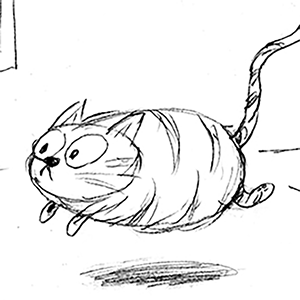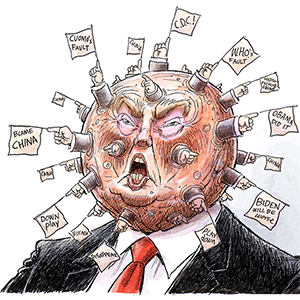Commentary: Why we should care about arts education in public schools
Published in Op Eds
Donald Trump has big plans for schools in his second term, which include gutting the Department of Education. His proposals have major implications for public school funding, and you can bet that arts education will be at the top of the list of cuts.
Support for the arts is an increasingly partisan issue, with conservatives calling for an end to public funds for the arts. In Florida, Gov. Ron DeSantis recently slashed millions in state funds for arts institutions, many of which partnered with schools to fill gaps in arts education.
In his first term, Trump threatened to eliminate the National Endowment for the Arts, the biggest funder for arts and arts education in the U.S., which provides pivotal support for programs in public schools. Chances are that arts education is not going to get support from the top down in Trump’s second term, so it’s up to parents to work from the bottom up.
With limited budgets and accountability pressures, time and resources for arts education continue to get squeezed out to make more space for the “basics,” subjects such as math, literacy and science, that predominately show up on standardized tests.
But the arts are the basics. And what if parents demanded that they be treated as such?
The arts are basic to human needs for expression, connection and understanding. They are so basic, in fact, that policymakers, school leadership, teachers and parents prioritized the arts in response to the mental health crisis during the pandemic. States used federal emergency funds to boost arts education programming. This funding is drying up, despite benefits to social-emotional and academic learning. The implication is that we can again deprioritize mental health and basic human development needs and get back to the learning that fits neatly into the framework of standardized tests.
As a professor of international education, I focus on the benefits of arts education globally, not solely for mental health but also how the arts might contribute to more peaceful societies. When I was in Afghanistan in 2015 researching an arts education program run by Bond Street Theatre, I saw firsthand that arts activities could create moments of connection, joy and play among teenagers who were deeply divided across ethnic, religious and tribal lines, even in one of the most challenging settings in the world.
The arts connect us to our own humanity and to the humanity of others, providing opportunities to complicate notions of “us” versus “them.” They build skills and behaviors that can equip our kids to challenge the status quo, draw attention to injustice, and imagine a better future in the face of increasing global conflicts, crises and polarization.
In times of crisis, conflict or instability, human beings turn to the arts to process experiences that language and logic fail to capture. The arts are a first-line approach to providing protective learning environments for children who have experienced traumatic events and adversity. The World Health Organization recommends using the arts to improve health and well-being, pointing to evidence that artistic media support communication across divides.
Research shows that children who receive quality early learning opportunities, which tend to draw heavily on arts activities, do better in the long run. We know that kids who participate in arts education in high school are more engaged in school and more likely to earn a four-year college degree. A recent impact evaluation focusing on kids in elementary and middle school showed that arts education improved writing achievement, reduced disciplinary infractions, and increased empathy and compassion.
Understandably, parents want their children to have access to well-paying, stable jobs and push their kids to focus on subjects that they will be tested on for advancement. Literacy, numeracy, and STEM subjects — science, technology, engineering and math — provide vital skills, yet they are not the only skills that matter.
Arts education is uniquely adept at building skills that are relevant and needed in response to artificial intelligence, increasing automation and a rapidly changing future. Indeed, the Program for International Student Assessment, or PISA, arguably the most influential international set of standardized assessments, recently put a spotlight on the importance of teaching and assessing creativity. Now more than ever, employers are seeking out-of-the box creative and critical thinkers.
If arts education is good for children’s mental health, well-being, engagement at school, empathy and innovation, why is it perpetually on the chopping block? Public education is constantly struggling for adequate funding, and with a mentality of the arts as a “nice-to-have” among politicians and decision-makers, it is easy to see how arts education gets pushed to the fringes.
But parents have a say in the education their children receive. They can put pressure on decision-makers to prioritize arts education through their votes, reaching out to members of Congress and local representatives, getting involved with local school boards and sitting on district committees. Parents can advocate within PTAs for schools to partner with arts organizations that provide unique learning opportunities inside and outside of the classroom. They can advocate for school plays, dance recitals or art walks, events that generate social connections and celebration, even in divided communities. They can organize art supply donations and distribute them to schools. Parents can also encourage their kids to stay engaged in the arts.
As a parent, I want my child to have those experiences that are unique to the arts classroom — to explore ideas outside the box, to put herself in someone else’s shoes, to share her voice in ways that aren’t confined by language or logic.
If parents demand that the arts be treated as “basic” to what public education should provide, we can shift the narrative. Perhaps we’ll even equip our children with skills to imagine and create a healthier, more peaceful future in the process.
____
Heddy Lahmann is a professor of international education at New York University, a research consultant for the Community Arts Network and a public voices fellow of The OpEd Project.
___
©2024 Chicago Tribune. Visit at chicagotribune.com. Distributed by Tribune Content Agency, LLC.




























































Comments